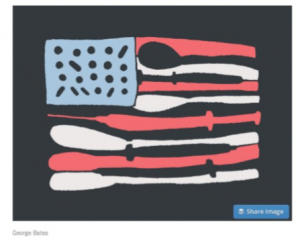 This week, President Trump’s commission on combating the opioid crisis, led by Gov. Chris Christie of New Jersey, recommended that the president declare a national emergency.
This week, President Trump’s commission on combating the opioid crisis, led by Gov. Chris Christie of New Jersey, recommended that the president declare a national emergency.
The problem has become significantly worse recently, so you might feel that you could use a little catching up. Here are 11 things you need to know.
1. How bad is it?
Drug overdoses are the leading cause of death for Americans under 50, and deaths are rising faster than ever, primarily because of opioids.
Overdoses killed more people last year than guns or car accidents, and are doing so at a pace faster than the H.I.V. epidemic at its peak. In 2015, roughly 2 percent of deaths — one in 50 — in the United States were drug-related.
Percentage of deaths classified as drug-related
Overdoses are merely the most visible and easily counted symptom of the problem. Over two million Americans are estimated to have a problem with opioids. According to the latest survey data, over 97 million people took prescription painkillers in 2015; of these, 12 million did so without being directed by a doctor.
2. What is an “opioid”?
That’s not really a helpful answer.
The first such drug, and the one from which the opioid receptors get their name, was opium. Opium, a narcotic obtained from a kind of poppy, has been used in human societies for thousands of years. From opium people derived a whole host of other drugs with similar properties: first morphine, then heroin, then prescription painkillers like Vicodin, Percocet and OxyContin. Opium along with all of these derivatives are collectively known as opiates.
Then there are a handful of compounds that act just like opiates but aren’t made from the plant. Opiates along with these synthetic drugs — chiefly methadone and fentanyl — are grouped together into the category of substances called opioids.
Opioid receptors regulate pain and the reward system in the human body. That makes opioids powerful painkillers, but also debilitatingly addictive.
3. So is this crisis about prescription painkillers or heroin?
The crisis has its roots in the overprescription of opioid painkillers, but since 2011 overdose deaths from prescription opioids have leveled off. Deaths from heroin and fentanyl, on the other hand, are rising fast. In several states where the drug crisis is particularly severe, including Rhode Island, Pennsylvania and Massachusetts, fentanyl is now involved in over half of all overdose fatalities.
Drug overdose deaths involving …
While heroin and fentanyl are the primary killers now, experts agree that the epidemic will not stop without halting the flow of prescription opioids that got people hooked in the first place.
Continue reading in The New York Times
Written by By